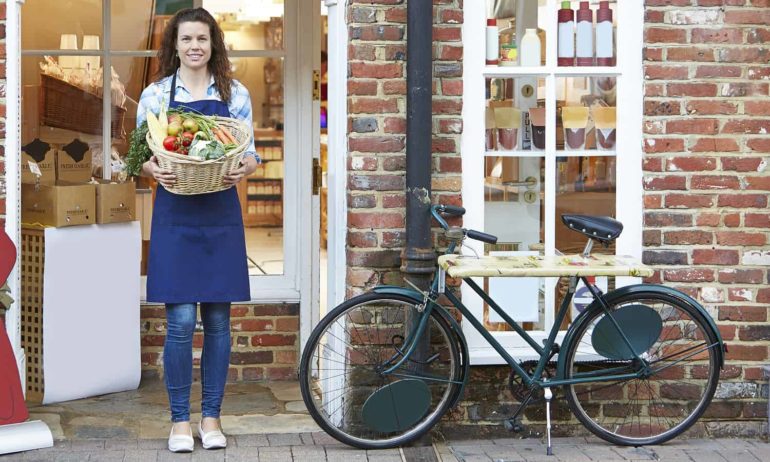Healthy retail programs in urban areas are helping change the way people eat across the United States. From DC Central Kitchen’s Healthy Corners to the Long Beach Healthy Market Partnership, health agencies, community organizations, and small businesses are teaming up to increase food access in underserved communities. These partnerships can help small corner stores increase their healthy offerings by providing a toolbox of resources and guidance.
Studies from PolicyLink and The Food Trust show that low-income neighborhoods and communities of color have limited access to full-service grocery stores and the fresh produce they offer. The U.S. Department of Agriculture estimates that 23.5 million people live in low-income areas that are more than a mile from a supermarket. These households are significantly less likely to have a vehicle available for food shopping, forcing many residents to rely on neighborhood convenience stores as their major food source. Unfortunately, many of these stores stock mainly processed, high-calorie, and low-nutrient foods, finds a report in Community Development Investment Review. What’s more, the fruits and vegetables which are available are often lower quality and expensive, according to a study published last year.
But according to recent studies from PolicyLink, residents with greater access to stores that offer healthy items consume more fruits, vegetables, whole grains, and low-fat dairy products. In a video produced by the Healthy Corner Store program in Richmond, VA, storeowner Jaheim Algaheim says, “A lot of my customers are senior citizens, so it makes me feel good that they don’t need to walk a lot just to get anything fresh.” Hannah Robbins, who oversees the Richmond program, attests “the community’s recognition of the now accessible healthy food products in these local corner stores has been well-received and much appreciated.”
In addition to increasing community health outcomes, corner store conversions can help stimulate local economies, demonstrated by the success of D.C. Healthy Corner Store Program. In Washington D.C., 95 percent of participating stores agreed that taking part in Healthy Corners increased their store’s overall profit, according to Janell Walker of DC Central Kitchen. Storeowners point to fresh fruit cups, grab-and-go salads, and bananas as their most popular items.
Retail programs across the country differ in their specific approaches, but most conduct a baseline evaluation of the store, identify areas of improvement, and offer assistance and support. For example, the Long Beach Healthy Market Partnership, composed of the Long Beach Department of Health and Human Services and partner community organizations, uses a retail scorecard to initially assess convenience stores in a targeted area. “This scorecard rates markets based on criteria that include quality and types of offerings, as well as safety and marketing inside and outside the store,” said Tony Damico, founder of Long Beach Fresh, a local food policy council and member of the Healthy Market Partnership. “Once a store sees their rating, we can offer simple ways for them to improve to meet the score card baseline.” Retail program coordinators provide services and support such as marketing materials, cooking demos, and technical assistance on handling perishables.
Changing retail environments is no easy feat, requiring dedicated partners, perseverance, and motivated community members. By increasing supply and demand for healthy foods, retail partnerships combat food deserts and reinvigorate local economies. The end results put a nutritious diet and good health within reach for many more communities, all while creating a more equitable food system.















